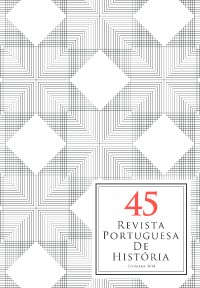Please use this identifier to cite or link to this item:
https://hdl.handle.net/10316.2/35447| Title: | Cidade Universitária de Coimbra: património e exaltação | Other Titles: | The University town of Coimbra: patrimony and exaltation | Authors: | Rosmaninho, Nuno | Keywords: | University of Coimbra;UNESCO world heritage site;Estado Novo/New State;Monumental Staircase;Universidade de Coimbra;património mundial da UNESCO;Estado Novo;Escadas Monumentais | Issue Date: | 2014 | Publisher: | Imprensa da Universidade de Coimbra | Abstract: | O presente artigo esboça uma história da recepção estética e política da cidade universitária de Coimbra edificada pelo Estado Novo. O objectivo é detectar as transformações que acompanharam a sua elevação a património mundial da UNESCO (2013) e, em particular, contextualizar o clamor dos estudantes contra as inscrições partidárias na escadaria monumental (Maio de 2011). Para isso, a recepção crítica é dividida em cinco períodos definidos pela tónica dos discursos: o fascínio pela «grandeza» das obras que se anunciam (1934-1941); a interpretação política da monumentalidade arquitectónica e urbanística (1941-1966); a tardia valorização do núcleo histórico urbano e o vigor crescente dos juízos estéticos e políticos negativos (1966-1990); o predomínio das interpretações historiográficas (1990-2011); o reinvestimento simbólico e afectivo (a partir de 2011). This essay aims at outlining the background to the political and aesthetic reception of the University town of Coimbra built by the Estado Novo (New State). The goal is, therefore, to uncover the transformations associated with its being ranked as World Heritage site by UNESCO (2013) while contextualizing the students’ outcries against the political parties’ slogans/graffiti inscribed on its adjacent monumental staircase (May of 2011). To this aim, the critical reception is divided into five periods so as to highlight the emphasis put on the discourse of each particular one: the fascination aroused by the announcement of the “greatness” in these buildings (1934-1941); the political interpretation of this architectural urban monumentality (1941-1966); the late appreciation of this urban historical site and the vigorous crescendo underlying the negative aesthetic and political remarks (1966-1990); the prevalence of historiographical interpretations (1990-2011); and the symbolical and affectionate reinvestment (after 2011). |
URI: | https://hdl.handle.net/10316.2/35447 | ISSN: | 0870-4147 | DOI: | 10.14195/0870-4147_45_26 |
| Appears in Collections: | Revista Portuguesa de História |
Files in This Item:
| File | Description | Size | Format | |
|---|---|---|---|---|
| rph45_artigo28.pdf | 1.02 MB | Adobe PDF |  |
Items in DSpace are protected by copyright, with all rights reserved, unless otherwise indicated.
